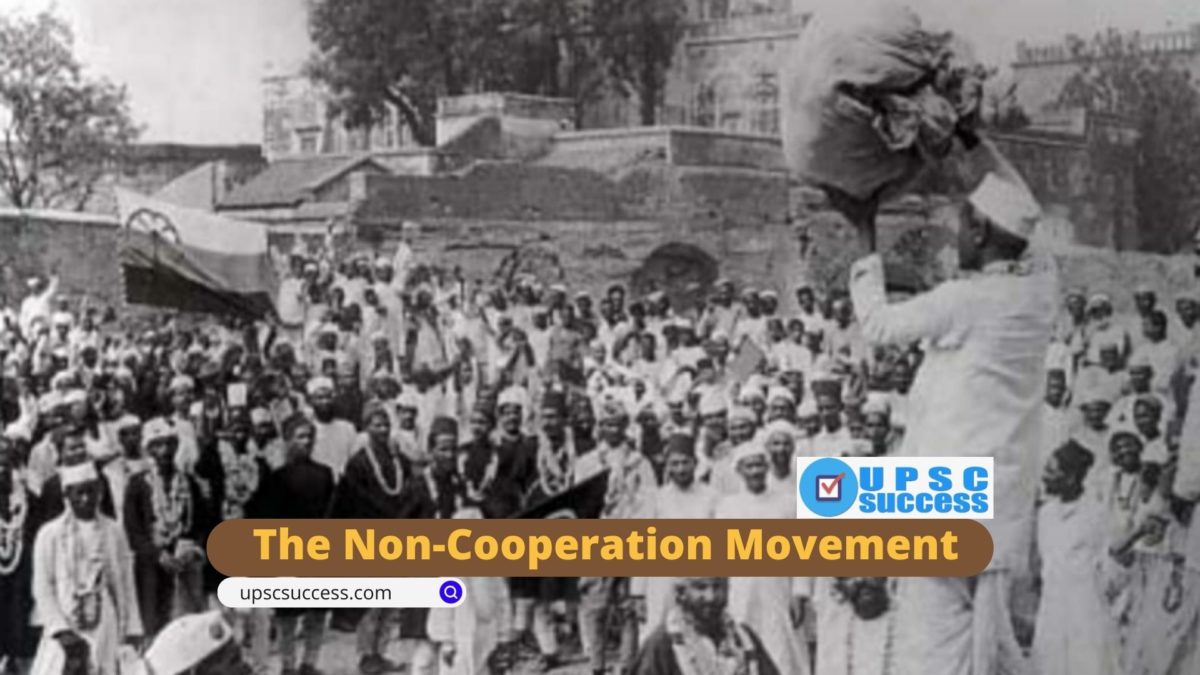Contents
- 0.1 What led to the Non-Cooperation Movement?
- 0.2 The Objectives of the Non-Cooperation Movement
- 0.3 The Non-Violent Methods Used in the Non-Cooperation Movement
- 0.4 The Impact of the Non-Cooperation Movement
- 0.5 The Aftermath of the Non-Cooperation Movement
- 0.6 The Legacy of the Non-Cooperation Movement
- 1 FAQs
The Non-Cooperation Movement was a significant event in India’s freedom struggle that marked a turning point in the country’s history. It was a mass movement led by Mahatma Gandhi and other leaders against British colonial rule. In this article, we will delve into the history, significance, and impact of the Non-Cooperation Movement, and how it shaped India’s independence movement.
What led to the Non-Cooperation Movement?
The Non-Cooperation Movement was a result of several events that took place in the early 20th century, including the partition of Bengal, the Rowlatt Act, and the Khilafat Movement. These events caused widespread discontent among the Indian population, and many leaders felt that it was time to take a more aggressive stance against British colonial rule.
The Objectives of the Non-Cooperation Movement
The primary objective of the Non-Cooperation Movement was to achieve swaraj, or self-rule, for India. This involved boycotting British goods and institutions, as well as refusing to pay taxes. The movement aimed to paralyze the British administration in India and force them to grant independence.
The Non-Violent Methods Used in the Non-Cooperation Movement
Mahatma Gandhi, the leader of the Non-Cooperation Movement, believed in non-violent resistance as a means of achieving political and social change. The movement involved hartal, or strike, picketing, and civil disobedience. This included boycotting British goods, offices, and institutions, as well as refusing to pay taxes and surrendering titles and honors.
The Impact of the Non-Cooperation Movement
The Non-Cooperation Movement had a significant impact on India’s freedom struggle. It led to the emergence of new leaders like Jawaharlal Nehru, who would later become India’s first Prime Minister. The movement also brought together people from different communities and religions, who united in their fight for independence. The British responded harshly to the movement, with many protestors being arrested and jailed. However, the movement did succeed in drawing international attention to the cause of Indian independence and inspiring other freedom movements around the world.
The Aftermath of the Non-Cooperation Movement
The Non-Cooperation Movement had a lasting impact on India’s independence movement. The Salt Satyagraha, which was a direct consequence of the Non-Cooperation Movement, furthered the cause of Indian independence. The movement also inspired other freedom movements around the world, including in South Africa and the United States.
The Legacy of the Non-Cooperation Movement
The Non-Cooperation Movement played a crucial role in shaping India’s independence movement. It inspired a generation of leaders and activists, who would go on to lead other mass movements like the Quit India Movement. The principles of non-violent resistance and civil disobedience, which were central to the movement, continue to inspire social and political change around the world today.
FAQs
The Non-Cooperation Movement was a mass civil disobedience movement that took place in India from 1920 to 1922. It was led by Mahatma Gandhi and aimed to achieve swaraj, or self-rule, for India by boycotting British goods and institutions and refusing to pay taxes.
The Non-Cooperation Movement was led by Mahatma Gandhi, who was a prominent leader in India’s independence struggle. He believed in non-violent resistance as a means of achieving political and social change, and his philosophy of satyagraha, or truth force, inspired the movement.
The primary objective of the Non-Cooperation Movement was to achieve swaraj, or self-rule, for India. This involved boycotting British goods and institutions, as well as refusing to pay taxes. The movement aimed to paralyze the British administration in India and force them to grant independence.
The Non-Cooperation Movement used several non-violent methods of protest, including hartal, or strike, picketing, and civil disobedience. This included boycotting British goods, offices, and institutions, as well as refusing to pay taxes and surrendering titles and honors.
The Non-Cooperation Movement had a significant impact on India’s independence movement. It led to the emergence of new leaders like Jawaharlal Nehru, who would later become India’s first Prime Minister. The movement also brought together people from different communities and religions, who united in their fight for independence. The British responded harshly to the movement, with many protestors being arrested and jailed. However, the movement did succeed in drawing international attention to the cause of Indian independence and inspiring other freedom movements around the world.
In March 1930, Mahatma Gandhi and a group of followers began a march from Sabarmati Ashram to the Arabian Sea, where they intended to collect salt in violation of the British monopoly. The march covered a distance of around 240 miles and attracted a large number of supporters along the way.
The Salt Satyagraha was an extension of the Non-Cooperation Movement, as it aimed to defy British authority and promote Indian self-rule. The protest was met with violent repression by the British, who arrested thousands of protesters, including Gandhi.

